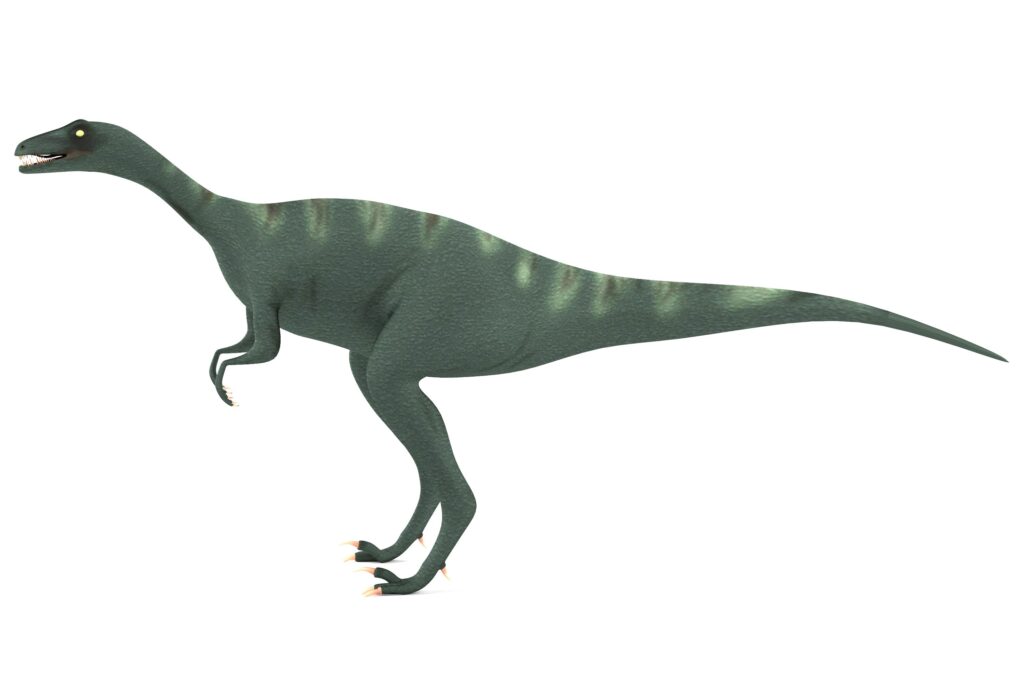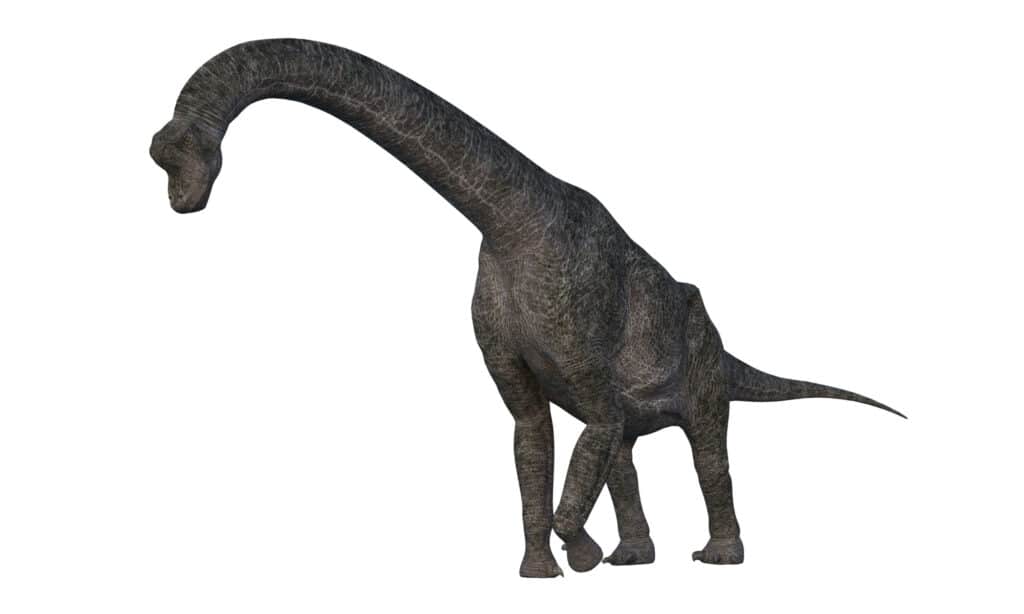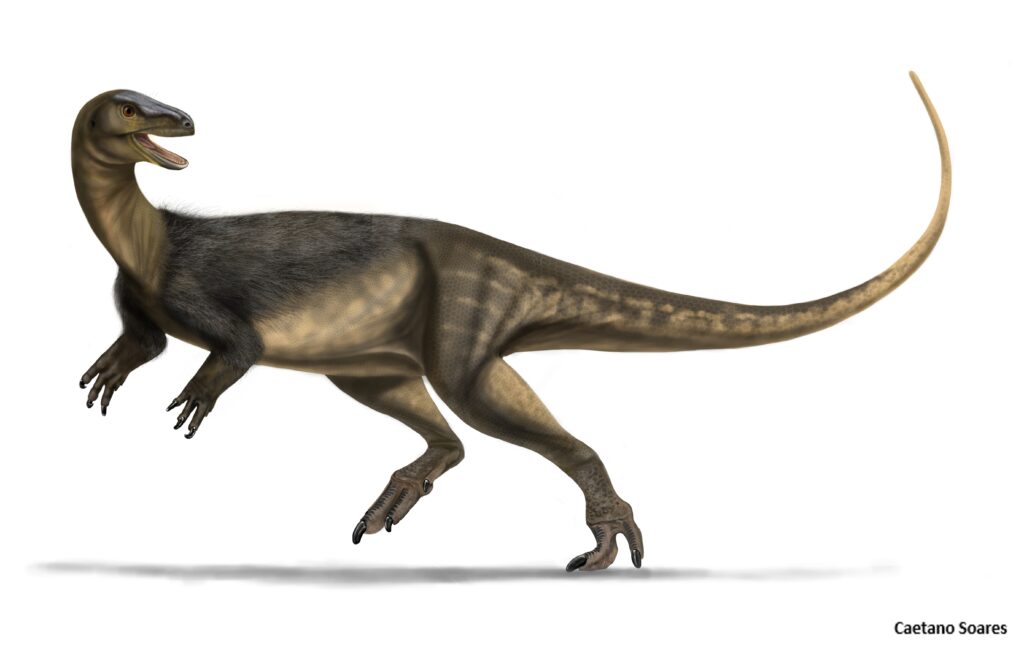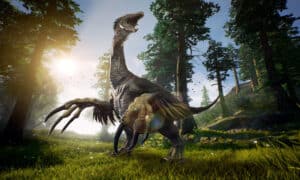The oldest dinosaurs evolved on Pangaea approximately 245 million years ago. As Pangaea split into continents, dinosaurs and their remains moved along with them. What are the four oldest dinosaurs ever discovered?
The 4 Oldest Dinosaurs Ever Discovered
During the period that saw the rise of the four oldest dinosaurs on this list, many types of dinosaurs came into being. A large number of these dinosaurs had similar anatomies and lifestyles to the listed species.
As time passed, individuals diversified the farther away they got from their source location. Differences in climactic conditions present in Pangaea are the largest contributor to the ability of dinosaurs to fan out and diversify as quickly as they did.
Since the continent was so large, areas close to the equator were much different than areas farther north or south. These varying conditions required different adaptations.
These are four of the oldest dinosaurs we know:
- Nyasasaurus parringtoni
- Saturnalia tupiniquim
- Mbiresaurus raathi
- Eoraptor lunensis
4. Eoraptor lunensis is 230 Million Years Old
Eoraptor lunensis is a dinosaur that lived about 230 million years ago during the Late Triassic. At a little over 3 feet in length, this dinosaur used two legs to walk instead of four. The fossilized teeth of this animal suggest that it was an omnivore.
This dinosaur is considered a sauropodomorph as they had long necks and tails with extra vertebrae, which allowed them to access the highest vegetation possible. Their teeth didn’t grind through chewing. Instead, food was processed by grinding stones in their stomachs that broke down durable plant fibers.
The location in Argentina that produced Eoraptor fossils also contained the remains of other contemporary animals. Dinosaurs make up only about six percent of the fossils paleontologists uncovered at the site. This shows that dinosaurs represented a small fragment of life on earth in that ecosystem at the time. Its final resting place in the Ischigualasto Formation in northwest Argentina also shows that early dinosaurs had fanned out into different home ranges by the time Eoraptor evolved onto the scene.
The Carnian Age of the Late Triassic hosted the diversification and dissemination of dinosaurs. The Carnian is the first period in the Triassic, and the fanning of species continued throughout the period. This included Eoraptor lunensis and other dinosaurs on this list.

is a dinosaur that lived about 230 million years ago.
©3drenderings/Shutterstock.com
3. Mbiresaurus raathi is 230 Million Years Old
The Triassic Period hosted Mbiresaurus raathi about 230 million years ago. Sauropods like brontosaurus and brachiosaurus are the progeny of this dinosaur. The fossils on record originate from Zimbabwe thanks to two digs that took place in 2017 and 2019.
Mbiresaurus raathi was an herbivorous dinosaur with an elongated neck and lengthy tail. It averaged around 6 feet in length, and it was between 20 and 65 pounds in weight. It stood on two legs despite laying the foundation for four-legged relatives.
Almost a complete skeleton, including articulated sections, was found when Mbiresaurus was unearthed. It’s currently housed at Virginia Tech, the home base for scientists who helped unearth the fossils. Once studies are complete, it will permanently reside at the Natural History Museum of Zimbabwe in Bulawayo.
Dinosaur fossils like these have changed how scientists view the earliest dinosaurs. We now think that a tiny group of small creatures lived in the background while giant crocodilian animals ruled the planet during the Triassic period. It took many millions of years for dinosaurs to dominate the earth.

Sauropods like brontosaurus and brachiosaurus are the progeny of
Mbiresaurus raathi, which lived 230 million years ago.
©iStock.com/IanGoodPhotography
2. Saturnalia tupiniquim is 233 Million Years Old
Saturnalia tupiniquim lived about 233 million years ago during the Late Carnian of the Late Triassic. Paleontologists found a skeleton that was only missing a few parts in southern Brazil.
Saturnalia is one of the oldest sauropodomorphs. They grew to about 5 feet long and didn’t weigh much. Despite this, they’re part of the lineage that produced the largest dinosaurs ever. These prominent descendants include Supersaurus and Patagotitan.
Saturnalia‘s fossils suggest that its diet had become more predatory since dinosaurs first evolved onto the scene 10 million years prior. This is inferrable from its skull size and predicted musculature, given the bones that can be studied.
The name of the dinosaur Saturnalia tupiniquim has two inspirations. First, Saturnalia is an Ancient Roman festival, and this fossil was found during its historical dates. Finally, the term tupiniquim is a colloquialism for “Brazilian,” which is fitting since this dinosaur was found within the country.

is one of the oldest
sauropodomorphs, and it lived 233 million years ago.
©CaetaMS, CC BY-SA 4.0 <https://creativecommons.org/licenses/by-sa/4.0>, via Wikimedia Commons – License
1. Nyasasaurus parringtoni is 243 Million Years Old
Nyasasaurus parringtoni is a small dinosaur that lived about 243 million years ago. This fossil showed that dinosaurs roamed the earth about 10 million years earlier than previously thought. Though this is the oldest discovered dinosaur, there is likely a dinosaur that is the universal ancestor of all dinosaurs that has not been discovered.
The fossils were found in the 1930s in Tanzania, meaning that Nyasasaurus lived in Southern Pangaea during its lifetime. This reinforces that dinosaurs and their early relatives evolved in Southern Pangaea and then migrated elsewhere.
This dinosaur was up to 10 feet long and weighed up to 130 pounds. It probably stood on two legs though it’s hard to be precise as there are only six vertebrae and one arm bone for scientists to analyze.
Nyasasaurus parringtoni comes from the Middle Triassic rather than the Late Triassic, as seen with the previous dinosaurs on this list. The Triassic Period began after a major extinction event that eradicated a large portion of life on earth. Creatures on land and in the sea regenerated and evolved in response to new ecosystems which allowed for the development of Nyasasaurus parringtoni by the Middle Triassic.
The discovery of Nyasasaurus helps reinforce that dinosaurs slowly rose from the ashes of the Permian-Triassic extinction event that took place around 252 million years ago. It was previously believed that dinosaurs quickly evolved later due to unrelated circumstances. However, this specific extinction event was the largest ever and erased most of the life on earth.

In the 1930s, Francis Rex Parrington found the fossils of the oldest dinosaurs at Lake Nyasa, in Tanzania, hence the name
Nyasasaurus parringtoni.
©Diana Sahin/Shutterstock.com
The photo featured at the top of this post is © Orla/Shutterstock.com
Thank you for reading! Have some feedback for us? Contact the AZ Animals editorial team.






